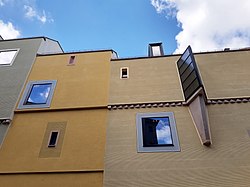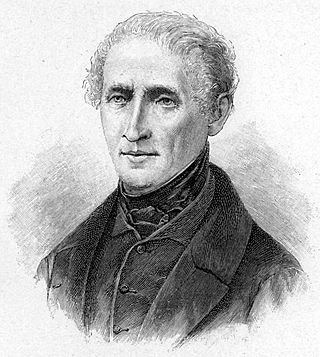
Joseph Freiherr von Eichendorff was a German poet, novelist, playwright, literary critic, translator, and anthologist. Eichendorff was one of the major writers and critics of Romanticism. Ever since their publication and up to the present day, some of his works have been very popular in German-speaking Europe.

The Städel, officially the Städelsches Kunstinstitut und Städtische Galerie, is an art museum in Frankfurt, with one of the most important collections in Germany. The museum is located at the Museumsufer on the Sachsenhausen bank of the River Main. The Städel Museum owns 3,100 paintings, 660 sculptures, more than 4,600 photographs and more than 100,000 drawings and prints. It has around 7,000 m2 (75,000 sq ft) of display and a library of 115,000 books.
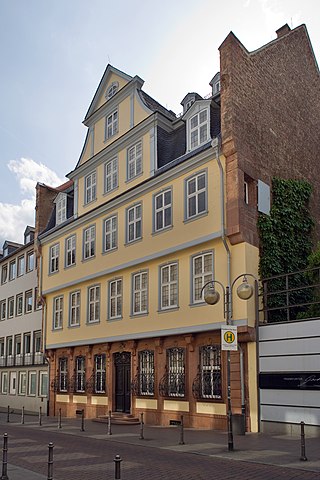
The Goethe House is a writer's house museum located in the Innenstadt district of Frankfurt, Germany. It is the birthplace and childhood home of German poet and playwright Johann Wolfgang von Goethe. It is also the place where Goethe wrote his famous works Götz von Berlichingen,The Sorrows of Young Werther, and the first drafts of Urfaust. The house has mostly been operated as a museum since its 1863 purchase by the Freies Deutsches Hochstift, displaying period furniture and paintings from Goethe's time in the house.

Museumsufer is the name of a landscape of museums in Frankfurt, Hesse, Germany, lined up on both banks of the river Main or in close vicinity. The centre is the art museum Städel. The other museums were added, partly by transforming historic villas, partly by building new museums, in the 1980s by cultural politician Hilmar Hoffmann. The exhibition hall Portikus was opened on an island at the Alte Brücke in 2006.

Georg Heinrich Otto Volger was a German geologist from Lüneburg. He was the founder and first chairman of the Freies Deutsches Hochstift, which he led from 1859 to 1882.
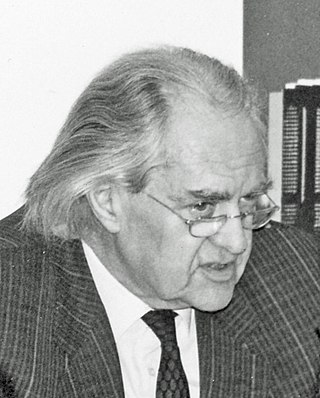
Hilmar Hoffmann was a German stage and film director, cultural politician and academic lecturer. He founded the International Short Film Festival Oberhausen. He was for decades an influential city councillor in Frankfurt, where he initiated the Museumsufer of 15 museums, including the Jewish Museum Frankfurt. He was the president of the Goethe-Institut and taught at universities such as Bochum and Tel Aviv. He wrote the book Kultur für alle, which was a motto of his life and work.

The Liebieghaus is a late 19th-century villa in Frankfurt, Germany. It contains a sculpture museum, the Liebieghaus Skulpturensammlung, which is part of the Museumsufer on the Sachsenhausen bank of the River Main. The collection comprises some 3,000 sculptures, spanning over 5,000 years of culture.

The German Architecture Museum (DAM) is located on the Museumsufer in Frankfurt, Germany. Housed in an 18th-century building, the interior has been re-designed by Oswald Mathias Ungers in 1984 as a set of "elemental Platonic buildings within elemental Platonic buildings". It houses a permanent exhibition entitled "From Ancient Huts to Skyscrapers" which displays the history of architectural development in Germany.

Walther Wolfgang Freiherr von Goethe was a German composer and court chamberlain. He was one of the grandsons and last living descendant of Johann Wolfgang von Goethe.
The Hessian Cultural Prize is an annual German culture prize awarded by the Government of Hesse. The prize was established in 1982. With a trophy of 60,000 German marks, now 45,000 Euro, it is currently the highest endowed culture prize in Germany.

The Freies Deutsches Hochstift is a literary association based in Frankfurt, Hesse, Germany. It is the owner of the Goethe House, the place where the playwright and poet Johann Wolfgang von Goethe was born and spent his early years, which it operates as a museum. The Hochstift also manages the Deutsches Romantik-Museum, a museum dedicated to German Romanticism which opened in 2021.

Britomart Delivering Amoretta from the Enchantment of Busirane is a 1824 oil painting on canvas by Swiss painter Henry Fuseli. It depicts a scene from Edmund Spenser's poem The Faerie Queene in which the female knight Britomart frees Amoretta, a beautiful woman, from her captivity at the hands of Busirane, an evil sorcerer.
Ernst Beutler was a German literary historian and Goethe researcher who served as the director of the Freies Deutsches Hochstift literary society between 1925 and 1960.

Otto Heuer was a German literary historian. He served as the director of the Freies Deutsches Hochstift literary association from 1888 until his retirement in 1925.
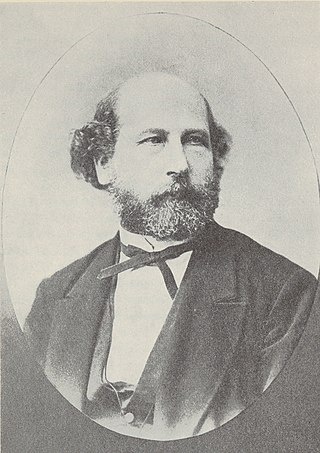
Karl Nikolaus Berg was a German politician from Frankfurt.
Detlev Lüders was a German academic who served as the director of the Freies Deutsches Hochstift between 1963 and 1982.
Christoph Perels is a German academic who served as director of the Freies Deutsches Hochstift literary association between 1983 and his retirement in 2003.
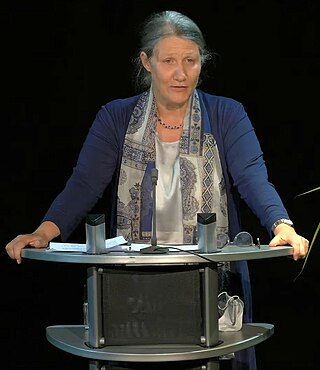
Anne Bohnenkamp-Renken is a German academic who has served as the director of the Freies Deutsches Hochstift since 2003. She received the 2022 Hessian Cultural Prize for both her direction of the Hochstift and her personal academic work.
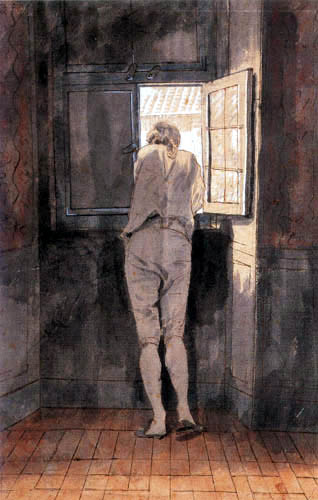
Goethe at the Window is a 1786/7 watercolour by German painter Johann Heinrich Wilhelm Tischbein. It depicts the poet Johann Wolfgang von Goethe looking out of the window of the apartment in Rome he shared with the artist.
Theo Kellner was a German artist and architect active in Berlin, Erfurt and Frankfurt.
